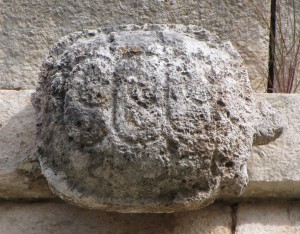The Mayans were seriously ahead of the Europeans for a great long while, as they knew how to count much more efficiently. And while their counting system might look daunting to modern eyes, being base twenty, it had only three symbols: zero, dot, line (line being a compiler representing five, like our four ones scored thru with a slash). No, it’s not Morse Code!
The result of this simplicity was elegant, and it enabled them to devise a calendar which was exceedingly accurate. The concept of zero was a great advantage. They represented zero by depicting a turtle on its back (dead?). For example: over the course of a million years, the Julian calendar had an error of 7802 days; the Sothis calendar 2198 days; the Gregorian calendar 302 days; but the Mayan calendar only 69 days.
And the Mayans could have made their calendar even more accurate, with a residual error of only 2 days, but for their penchant for divisibility of numbers. The astronomical correction cycle is 1507.03 years, but the Mayans instead of rounding down to 1507 (which would have given them the 2 day correction), they rounded up to 1508 for greater divisibility. 1507 has one division of 11 X 137, but 1508 can be divided by 4 and by 13 and 29, two very important numbers to the Maya.
Friend Peter sent me a short video showing how the Maya did math. Pretty cool, no?
Turtle shell adorning a temple at Uxmal.



